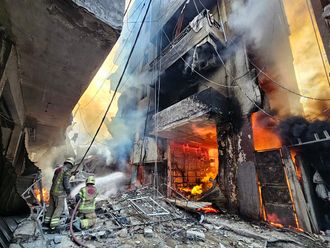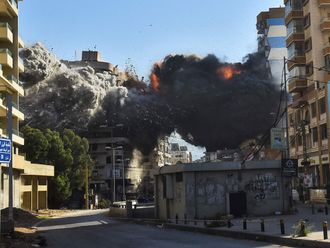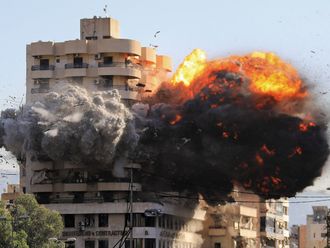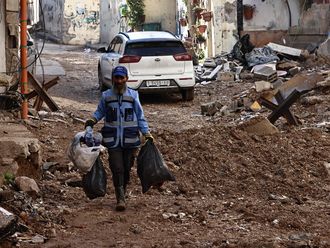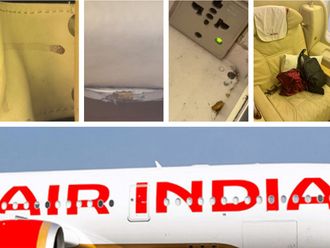Tehran: Iran on Saturday acknowledged that its armed forces “unintentionally” shot down the Ukrainian jetliner that crashed earlier this week, killing all 176 aboard, after the government had repeatedly denied Western accusations that it was responsible.
The plane was shot down early Wednesday, hours after Iran launched a ballistic missile attack on two military bases housing US troops in Iraq in retaliation for the killing of Iranian Gen. Qassem Soleimani in an American air strike in Baghdad. No one was wounded in the attack on the bases.
A military statement carried by state media said the plane was mistaken for a “hostile target” after it turned toward a “sensitive military centre” of the Revolutionary Guard. The military was at its “highest level of readiness,” it said, amid the heightened tensions with the United States.
“In such a condition, because of human error and in a unintentional way, the flight was hit,” the military said. It apologised and said it would upgrade its systems to prevent future tragedies.
Those responsible for the strike on the plane would be prosecuted, the statement added.
Ukraine’s President Volodymyr Zelenskiy issued a statement saying the crash investigation should continue and the “perpetrators” should be brought to justice. He said Iran should compensate victims’ families, and he requested “official apologies through diplomatic channels.”
It was unclear whether the plane was shot down by Iran’s conventional forces or the powerful Revolutionary Guard, which answers directly to Supreme Leader Ayatollah Ali Khamenei.
Iran’s acknowledgement of responsibility for the crash was likely to inflame public sentiment against authorities after Iranians had rallied around their leaders in the wake of Soleimani’s killing. Soleimani, the leader of the Guard’s elite Quds Force and the architect of Iran’s regional military interventions, was seen as a national icon, and hundreds of thousands of Iranians had turned out for funeral processions across the country.
The majority of the plane crash victims were Iranians or Iranian-Canadians. Iranian officials had repeatedly ruled out a missile strike, dismissing such allegations as Western propaganda that officials said was offensive to the victims.
The crash came just weeks after authorities quashed nationwide protests ignited by a hike in gasoline prices. Iran has been in the grip of a severe economic crisis since President Donald Trump withdrew the US from the 2015 nuclear deal and imposed crippling sanctions.
Iran’s President Hassan Rouhani blamed the shootdown of the plane in part on “threats and bullying” by the United States after the killing of Soleimani. He expressed condolences to families of the victims, and he called for a “full investigation” and the prosecution of those responsible.
“A sad day,” Iran’s Foreign Minister Mohammad Javad Zarif tweeted. “Human error at time of crisis caused by US adventurism led to disaster. Our profound regrets, apologies and condolences to our people, to the families of all victims, and to other affected nations.”
The jetliner, a Boeing 737 operated by Ukrainian International Airlines, went down on the outskirts of Tehran shortly after taking off from Imam Khomeini International Airport.
The US and Canada, citing intelligence, said they believed Iran shot down the aircraft with a surface-to-air missile, a conclusion supported by videos verified by The Associated Press.
The plane, en route to the Ukrainian capital of Kiev, was carrying 167 passengers and nine crew members from several countries, including 82 Iranians, 57 Canadians and 11 Ukrainians, according to officials. The Canadian government had earlier lowered the nation’s death toll from 63.
“This is the right step for the Iranian government to admit responsibility, and it gives people a step towards closure with this admission,” said Payman Parseyan, a prominent Iranian-Canadian in western Canada who lost a number of friends in the crash.
“I think the investigation would have disclosed it whether they admitted it or not. This will give them an opportunity to save face.”
Iran’s acknowledgement of responsibility was likely to renew questions of why authorities did not shut down the country’s main international airport and its airspace after the ballistic missile attack, when they feared U.S. reprisals.
It also undermines the credibility of information provided by senior Iranian officials. As recently as Friday, Ali Abedzadeh, the head of the national aviation department, had told reporters “with certainty” that a missile had not caused the crash.
On Thursday, Cabinet spokesman Ali Rabiei dismissed reports of a missile, saying they “rub salt on a painful wound” for families of the victims.
Iran had also invited Ukraine, Canada, the United States and France to take part in the investigation of the crash, in keeping with international norms. The Boeing 737 was built in the United States and the engine was built by a US-French consortium.
Ukraine’s president said its team of investigators, who are already on the ground in Iran, should continue their work with “full access and cooperation.”
The military statement, issued by the Joint Chiefs of the Armed Forces, said Guard officials had been ordered to “provide a detailed explanation” to the public.
The semi-official Fars news agency reported that the supreme leader on Friday morning had ordered top security officials to review the crash and announce the results.
Fars, which is close to the Guard, appeared to deflect blame.
“If some individuals, in any position, were aware of the issue but made statements contradicting the reality or hid the truth for any reason, they should be named and tried,” it said.
Others speculated that the security forces may have concealed information from civilian authorities.
“Concealing the truth from the administration is dreadful,” Mohammad Fazeli, a sociology professor in Tehran, wrote on social media. “If it had not been concealed, the head of civil aviation and the government spokesmen would not have persistently denied it.”
“Concealing the truth for three days is dangerous,” he added.


